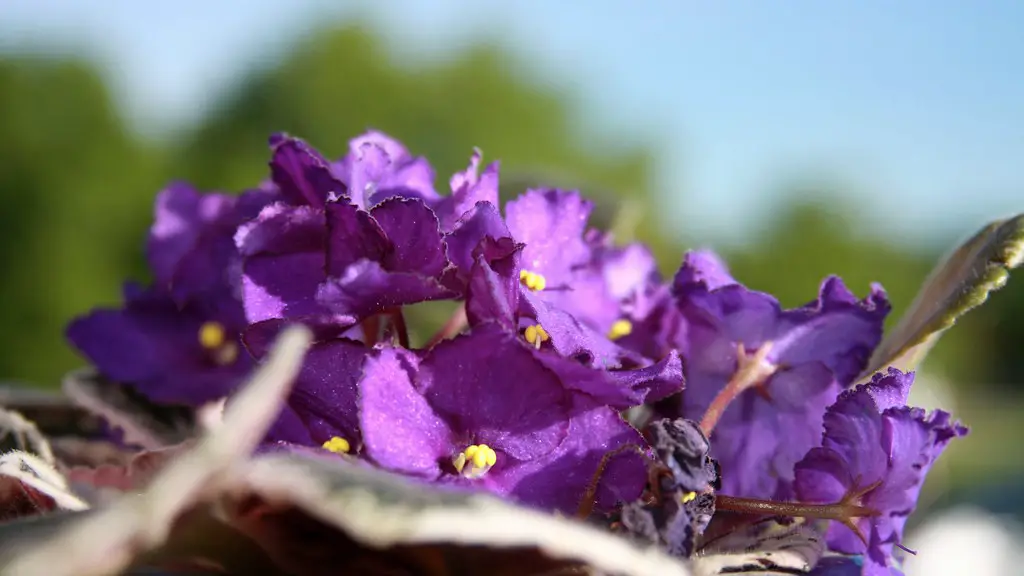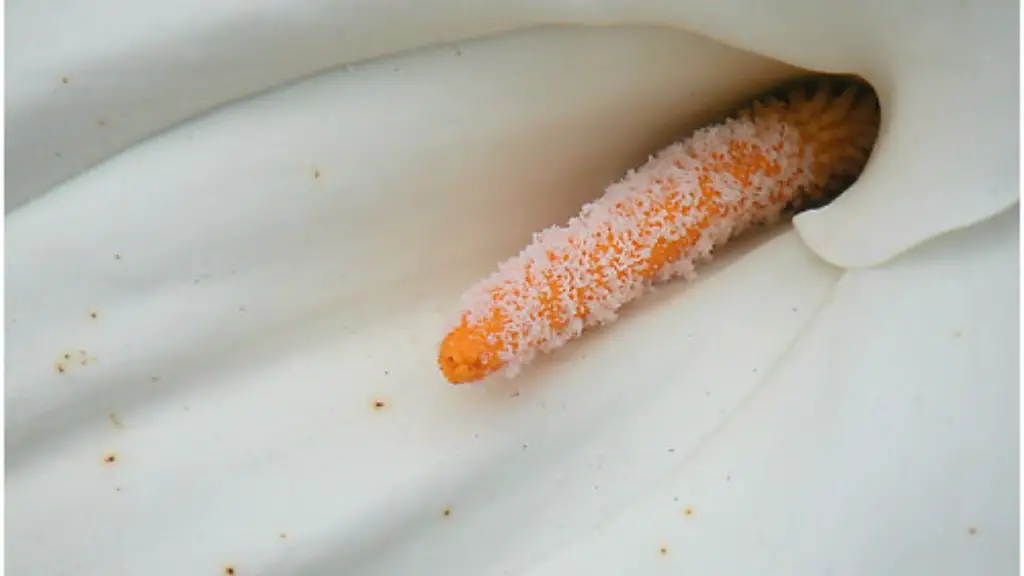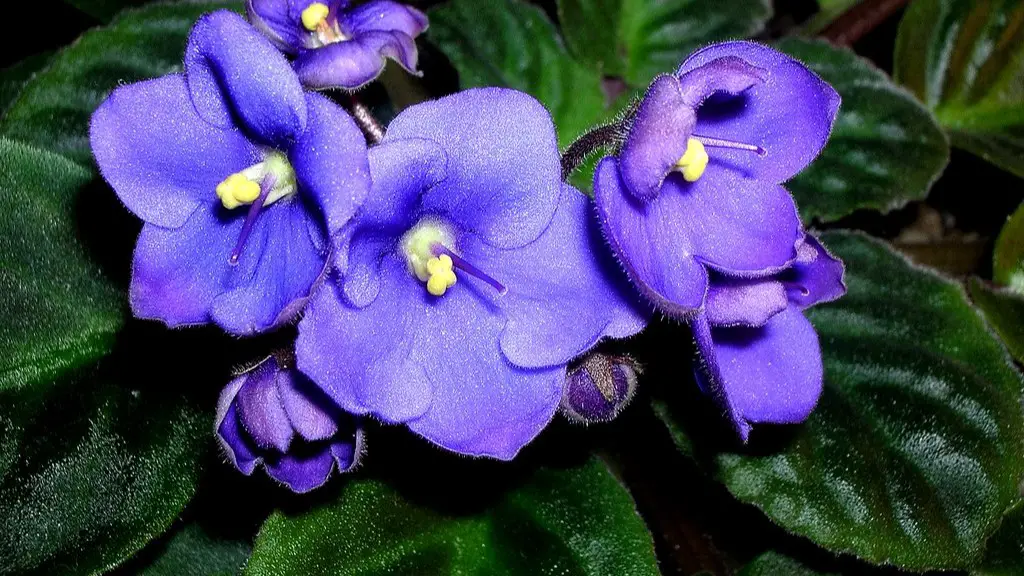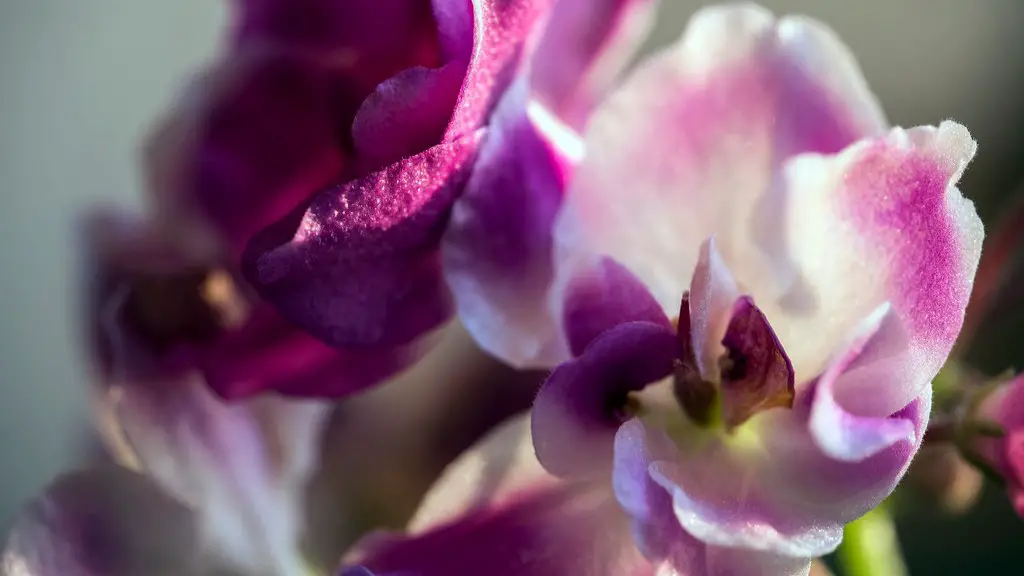If you are wondering how you can get your African violets to bloom, there are a few things you can do to encourage them. African violets are typically blooming plants, but sometimes they need a little help. Make sure you are giving your plant plenty of light and the right amount of water. African violets like to be moist, but not too wet. Allow the soil to dry out a bit between waterings. Another tip is to use a fertilizer designed specifically for African violets. You can find these at most garden stores. Follow the directions on the package for best results. With a little care, your African violets should bloom beautifully.
Step 1
Choose a location for your African violet. It should have filtered sunlight and a temperature between 65 and 75 degrees Fahrenheit.
Step 2
Water your African violet when the top of the soil is dry. Use tepid water and be sure to water the soil and not the leaves. Allow the excess water to drain away.
Step 3
Fertilize your African violet every two weeks with a half-strength fertilizer solution.
Step 4
Pinch off any flowers that wilt or fade. This will encourage the plant to produce new flowers.
How do you force an African violet to bloom?
The most common reason African violets don’t bloom is because they aren’t getting enough light. African violets need indirect sunlight, direct can burn the leaves. Choose a north- or east- facing window for best results. Keep plants away from cold glass and rotate the pot once a week so all leaves receive light.
African violets are a beautiful addition to any home, and with the right care, they can bloom nearly year-round! If you can provide the correct conditions, expect your African violets to bloom 10-12 months each year. Each bloom lasts for about 2-3 weeks, adding continuous color and beauty to your home.
How long does it take for an African violet to rebloom
African violets typically bloom every 6 to 8 weeks. With the right growing conditions, a healthy African violet produces flowers—usually several at once—that last several weeks. If you disbud your old flowers, new flowers should bloom within 6 to 8 weeks.
Epsom salts are a great way to provide your plants with essential magnesium and sulfur. Both of these minerals are necessary for producing beautiful blooms and healthy foliage. To use, simply mix one and a half teaspoons of Epsom salts in a quart of tepid water and swirl to dissolve. Then water your plants (below the leaves) with this solution once a month.
Can you use Miracle Grow on African violets?
African violets are beautiful flowers that add a touch of elegance to any home. They grow best in well-drained, slightly acidic soil. Miracle-Gro® Indoor Potting Mix is specially formulated to provide indoor plants like African violets with just the right growing environment.
African violets need bright, indirect light in order to thrive. A spot near an east- or north-facing window is often a good option. Avoid placing them in direct sun, as this can scorch the leaves. If a suitable window isn’t available, African violets can be placed under a fluorescent light fixture containing two 40-watt fluorescent tubes.
How often should a African violet be watered?
If you water your African violets once a week and allow the plant to completely dry between waterings, you can set up a wicking system to make sure they’re never over watered.
It is important not to use cold water on your African violets; lukewarm or warm water is preferred. If you water from the top, be careful not to get water on the leaves when the plant is in the sun; this is to avoid leaf spots.
What is the best African violet fertilizer for blooming
Many growers have the best success fertilizing once a week with a mild fertilizer designed for African violets. A balanced formula such as a 20-20-20 or one that has slightly more phosphorus, like a 15-20-15, will do well in most growing situations.
African violets need bright, indirect sunlight to bloom well. Too little sunlight causes them to stretch for the light and produce few or no flowers; too much sun can burn the leaves. An east-facing window is ideal, especially with a sheer curtain to block the sun’s harshest rays.
Should I cut the leaves off my African violet?
If you want to keep your African Violet plant healthy, you should remove three or more bottom leaves every month. This helps make room for new growth and gives the remaining foliage space to stretch out a bit. To free up even more energy, remove any dead or dying flowers during leaf pruning.
If you want your African Violet to thrive, it’s important to repot it with fresh potting soil at least twice a year, or more if necessary. When your plant becomes rootbound (ie, the roots are growing out and around the rootball), it’s time for a new pot. This will help your Violet get the nutrients it needs and keep it looking healthy and beautiful.
Is coffee grounds good for African violets
Coffee grounds are slightly acidic and contain nitrogen, which helps plants grow healthy foliage. Occasionally sprinkling used coffee grounds on top of your African violet potting soil can be good for the plant.
If you’re having trouble with powdery mildew on your African violets, you might want to try spraying them lightly with a mixture of baking soda and water. You can also spray the air around the plant with Lysol or another household disinfectant, but be careful not to get too much spray on the leaves.
Can you use hydrogen peroxide on African violets?
Pouring hydrogen peroxide into your fertilized water can help to prevent algae growth. However, the plant may not soak up the water due to the hydrogen peroxide. To resolve this, try pouring the water through the top of the pot to get the capillary action going.
African violets need 10 or more hours of bright, filtered light every day. They should never be in direct sunlight, as this will scorch their leaves. The soil should be kept moist, but well drained. You want to avoid having soggy soil, as this can lead to problems with the roots.
Final Words
African violets need a few things to bloom: they need to be in a warm spot with indirect sunlight, they need to be watered regularly but not too much (allow the soil to dry out a bit between waterings), and they need to be fertilized regularly. If you give them what they need, they should start blooming in no time!
To get African violets to bloom, you need to give them the right amount of water and light. African violets like to be kept moist, but not wet, so water them when the soil feels dry. They also need bright, indirect light.





